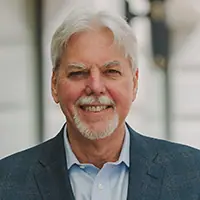
The Comeback Kids
Among the most celebrated figures in finance is the corporate turnaround artist. Lee Iacocca became a legend in the early 1980s when he engineered the revival of Chrysler Corp. and gave us that famous marketing line-“If you can find a better car, buy it!” So, too, did the late Steve Jobs when he returned to a deeply troubled Apple Inc. in the late 1990s, years after he had been fired by Apple’s board of directors, and elevated it to become one of America’s great companies.
Banking has had its share of comebacks as well. I think one of the more impressive performances of the last 20 years belongs to Frank Cahouet, who became president and chief executive officer of Mellon Financial Corp. in 1987 after a string of lending miscues put the Pittsburgh-based bank on the ropes. First Cahouet cleaned up the loan portfolio using an innovative “good bank/bad bank” work out structure, then executed a bold strategic transformation in which Mellon sold its retail branch network, got out of the corporate lending business, and through a series of acquisitions, moved into the asset management space, culminating in its 1994 acquisition of mutual fund giant Dreyfus Corp. When Cahouet retired in 1998, Mellon was once again strong and profitable. Three years later Mellon merged with Bank of New York Corp. and Cahouet’s strategic vision lives on in the surviving company, now a global powerhouse in securities servicing and money management.
Although it might seem ironic, I would also recommend John Reed’s efforts to pull what was then Citicorp back from the brink of failure in the early 1990s after the New York-based bank choked on billions of dollars in toxic real estate and leverage buyout loans. I say ironic because the former CEO’s inattention to detail (I wrote about Citi’s problems at the time) contributed to the situation in the first place: Reed’s background was in consumer banking and he pretty much delegated management of the bank’s business lending activities to others. Reed cleaned up the mess and relied on Citi’s highly profitable international operation to return the bank to health. In truth, Reed was probably lucky to have even got the opportunity to become one of the comeback kids. My sense at the time was that Citi’s board decided not to fire him because it couldn’t find a replacement that was likely to be any better-Citi was then the country’s largest and most complex bank-and the regulators concurred. Given a chance, Reed did what needed to be done.
A more recent turnaround worth watching is the fine work that CEO Stephen Steinour has done to revitalize Columbus, Ohio-based Huntington Bancshares Inc., which is the subject of our cover story beginning on page 24. Like Mellon and Citi, Huntington was nearly done in by its own lending misadventures (in this case subprime mortgage and real estate development) and Steinour was brought in to right the ship. I think the Huntington situation highlights two truisms about bank turnarounds. One, you need a little luck to rescue a troubled bank. When the old Bank of New England Corp. failed in 1991, its ratio of nonperforming assets to total loans and leases had exceeded 15 percent, it was dangerously low on capital and a severe New England recession kept getting worse. (I also wrote about Bank of New England at the time.) Although bad, Huntington’s asset quality problems were never that bad, and a stable Midwest economy has helped rather than hurt its case. You might say Steinour has benefited from luck of a different kind.
The other truism about bank turnarounds is that the new CEO needs to hit the ground running with a good operating plan because distressed financial companies can deteriorate very quickly. Early on, Steinour made two decisions that seem to have set the stage for Huntington’s recovery. First, and almost immediately, he undertook a thorough review of the loan portfolio that enabled the bank to soon put its asset quality problems behind it. And second, Steinour pushed his retail and corporate banking teams to start growing revenues in the second half of 2009 when most of Huntington’s competitors were still focused on their own problems, and that growth has powered the bank’s recovery.
I think there is a tendency to lionize CEOs who have led successful turnarounds, and to subscribe to them almost mythical qualities. Or to borrow a line from J.R.R. Tolkien in “Lord of the Rings,” “[W]isdom sat upon his brow, and strength and healing were in his hands, and a light was about him.” All fine attributes, to be sure, but in this line of work, nothing beats a little luck and a sound plan.

Join OUr Community
Bank Director’s annual Bank Services Membership Program combines Bank Director’s extensive online library of director training materials, conferences, our quarterly publication, and access to FinXTech Connect.
Become a Member
Our commitment to those leaders who believe a strong board makes a strong bank never wavers.



